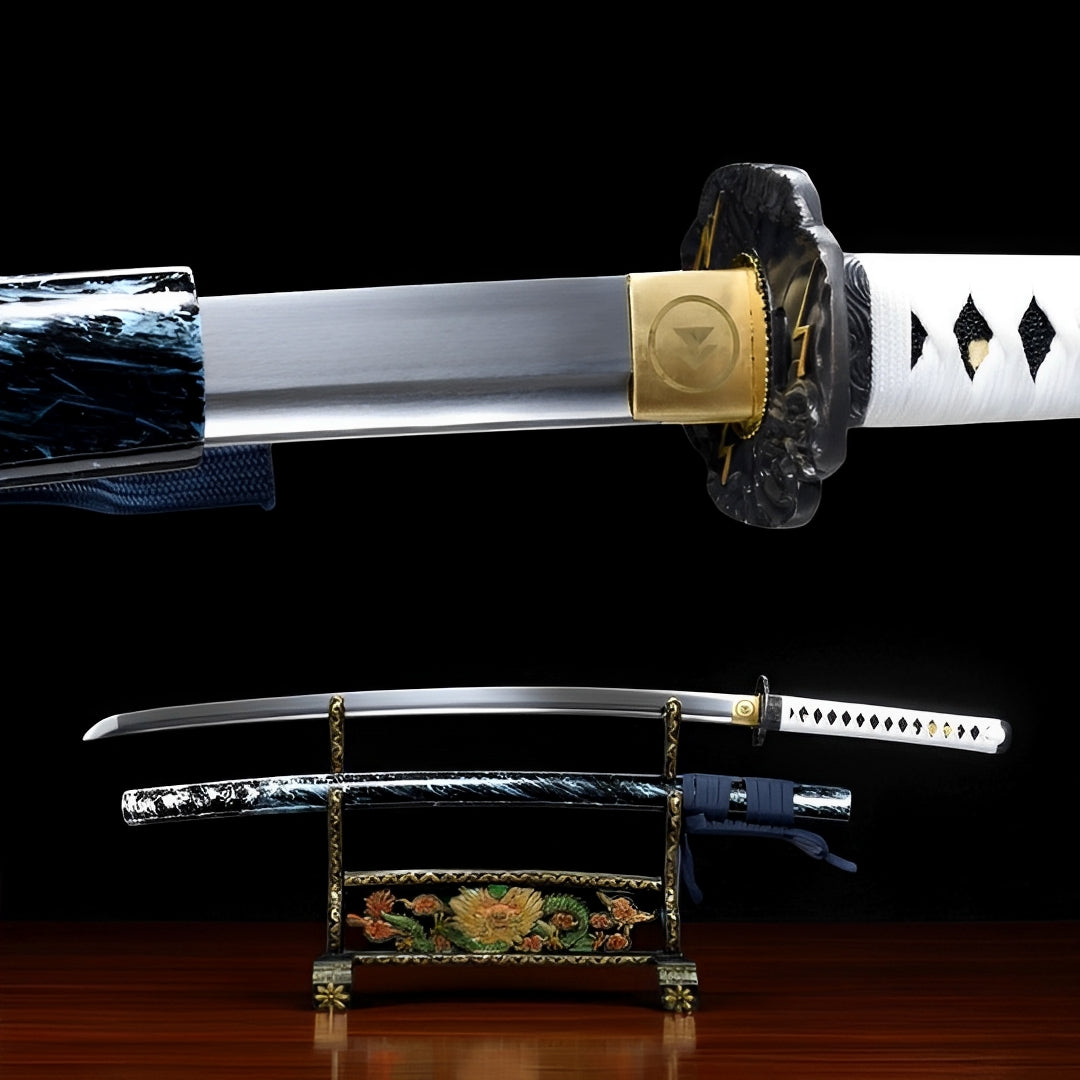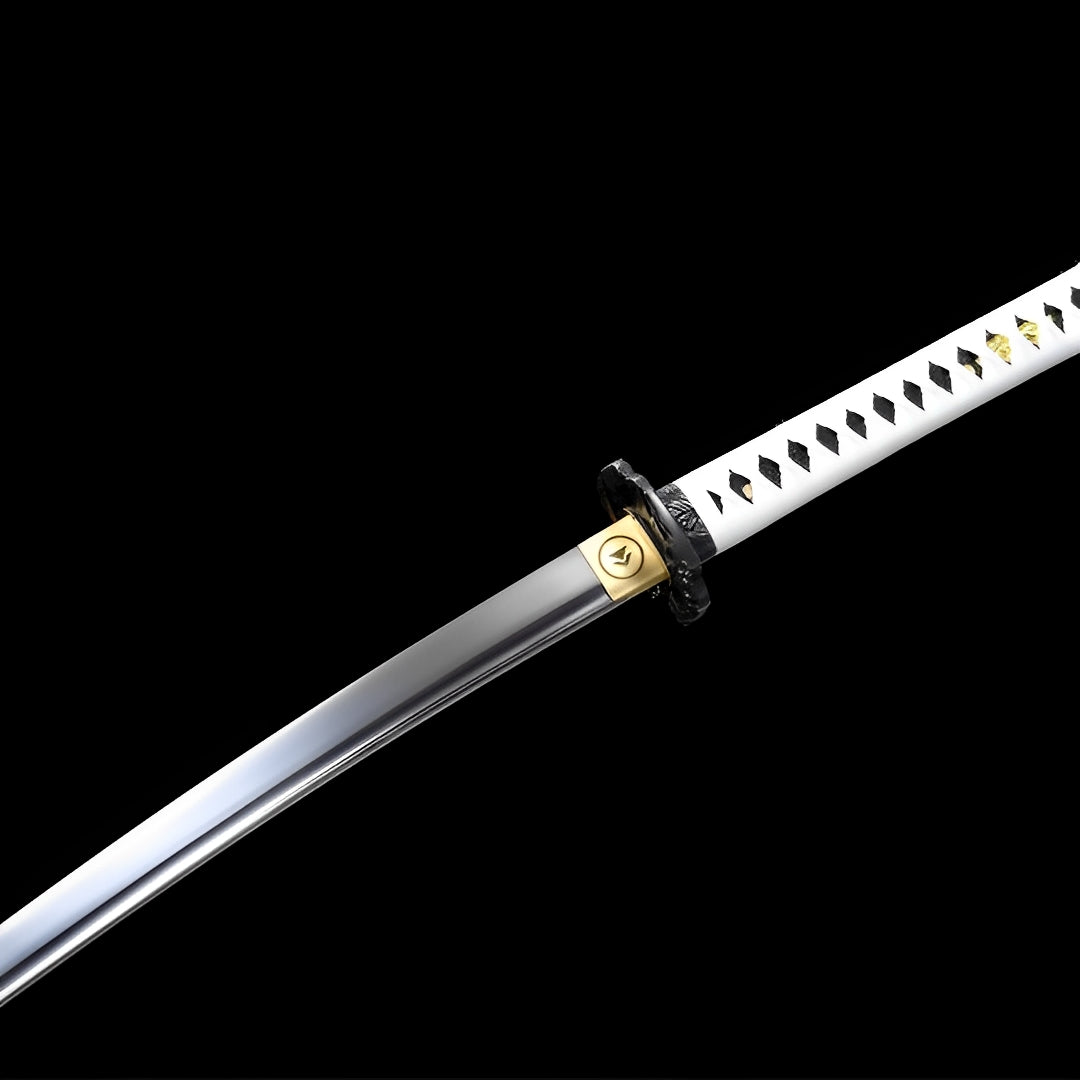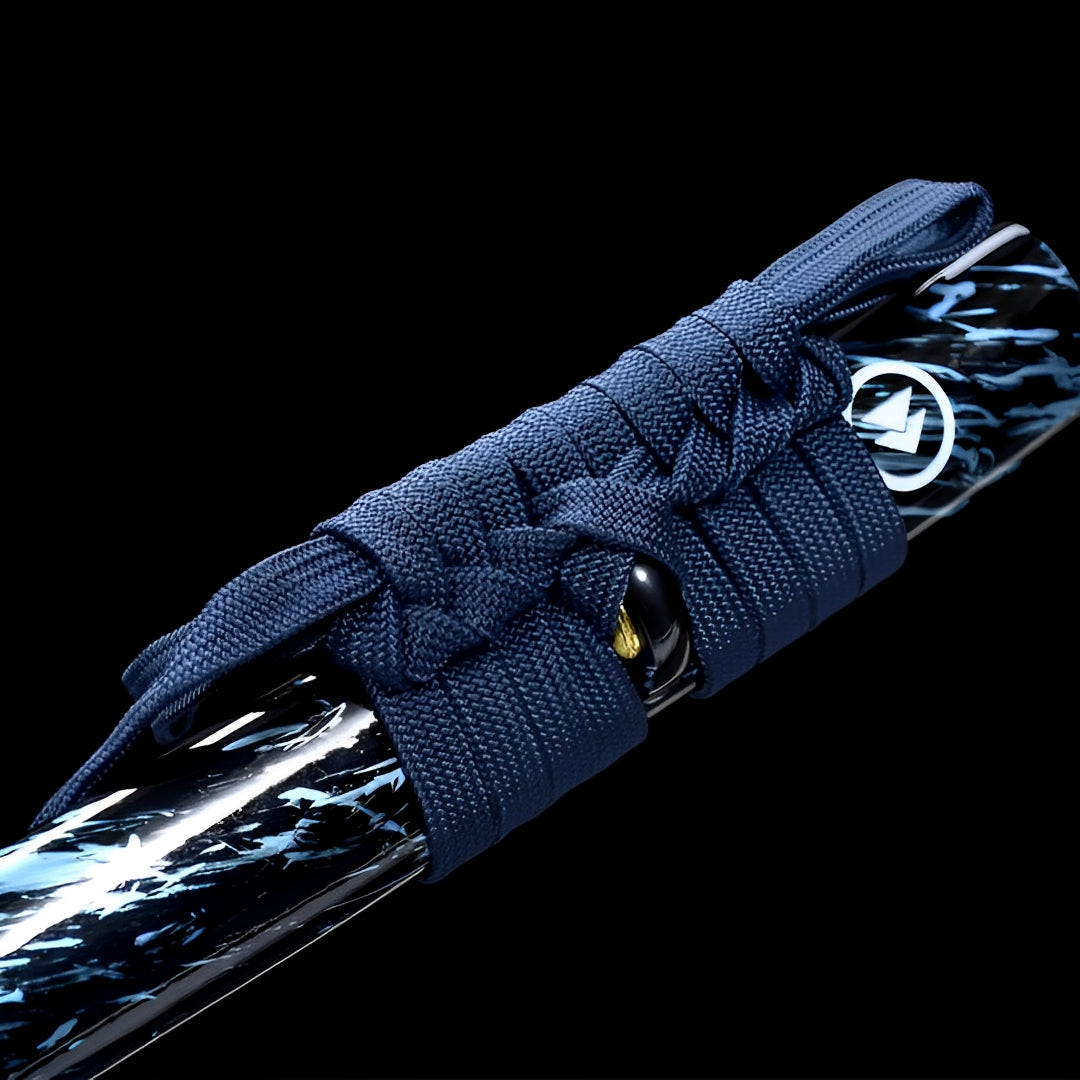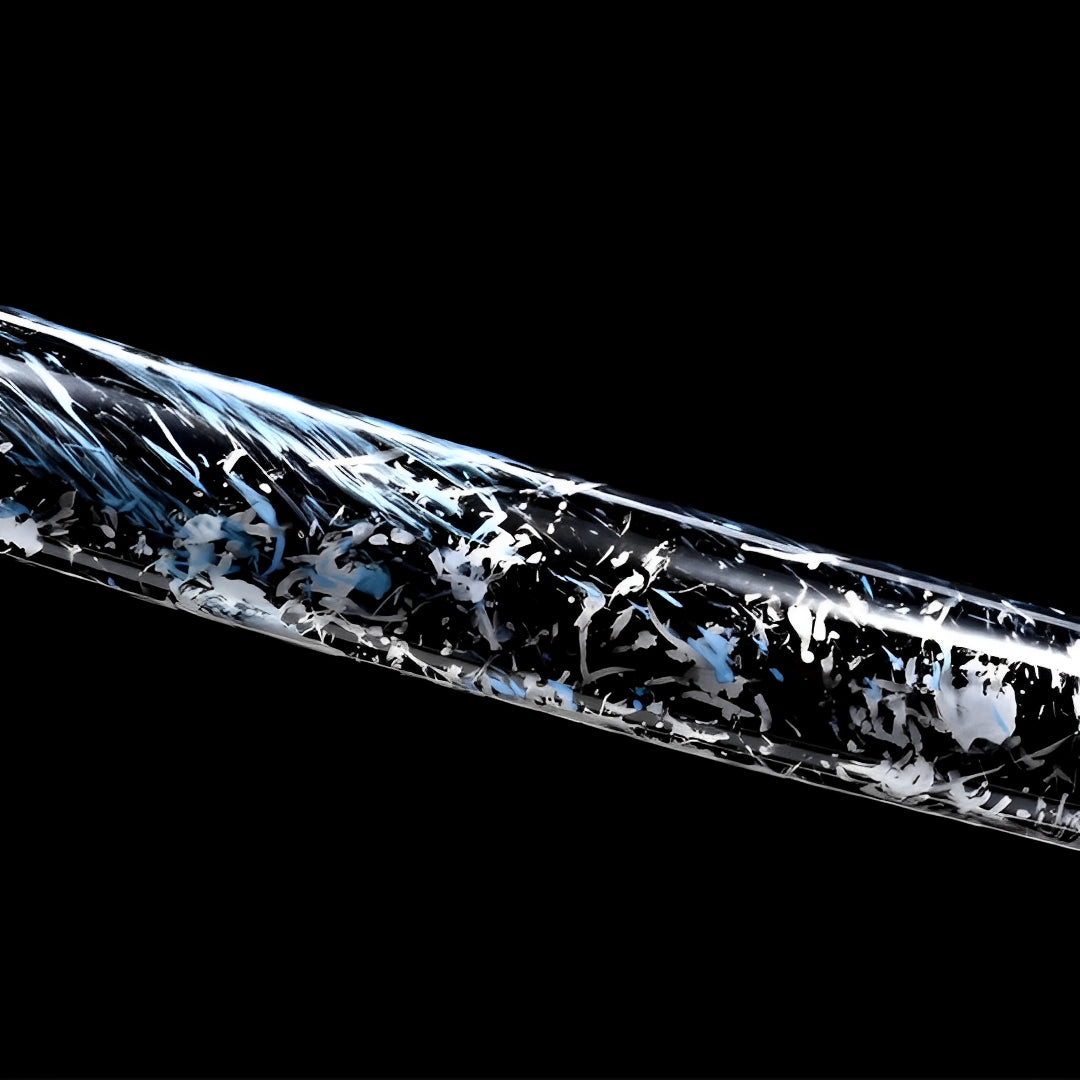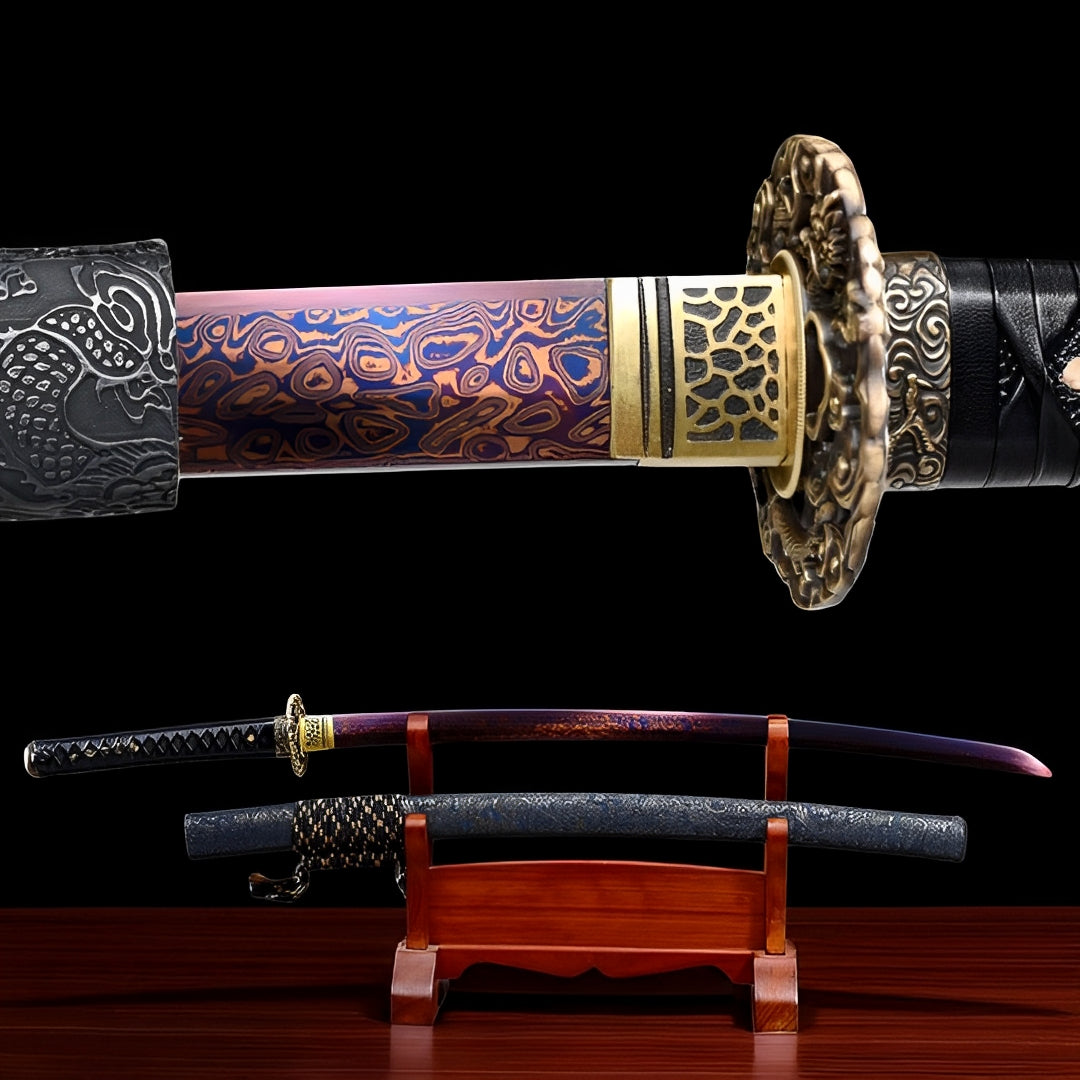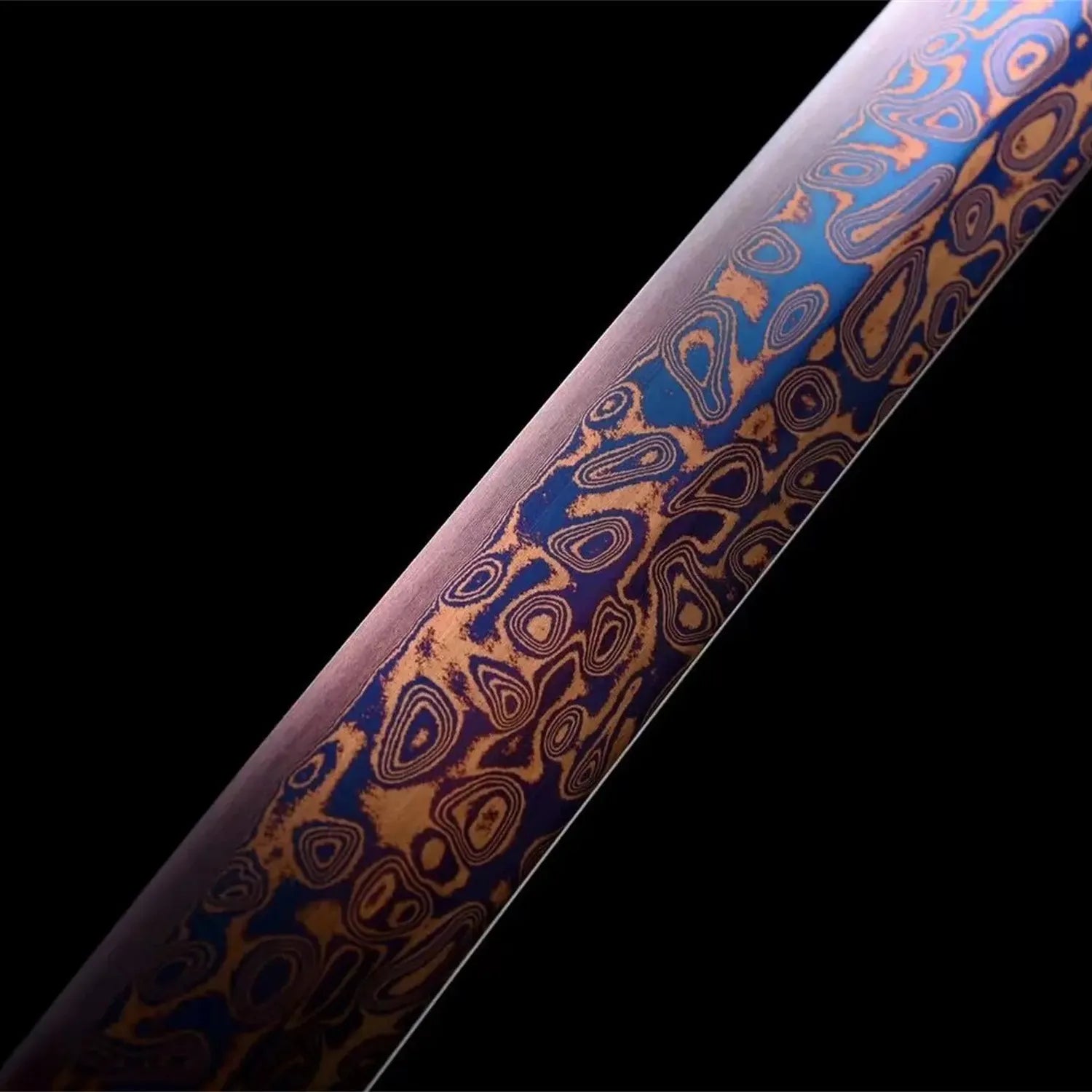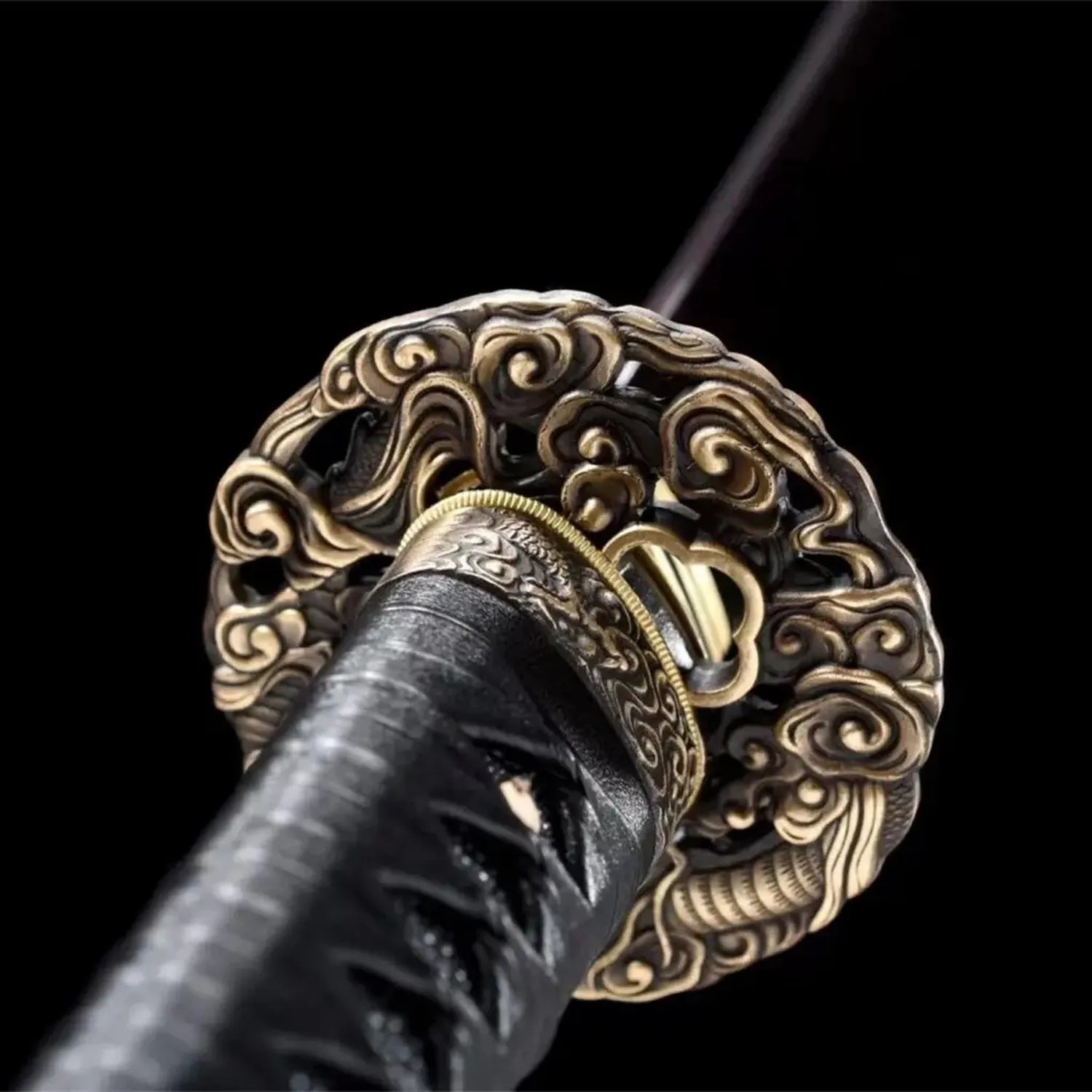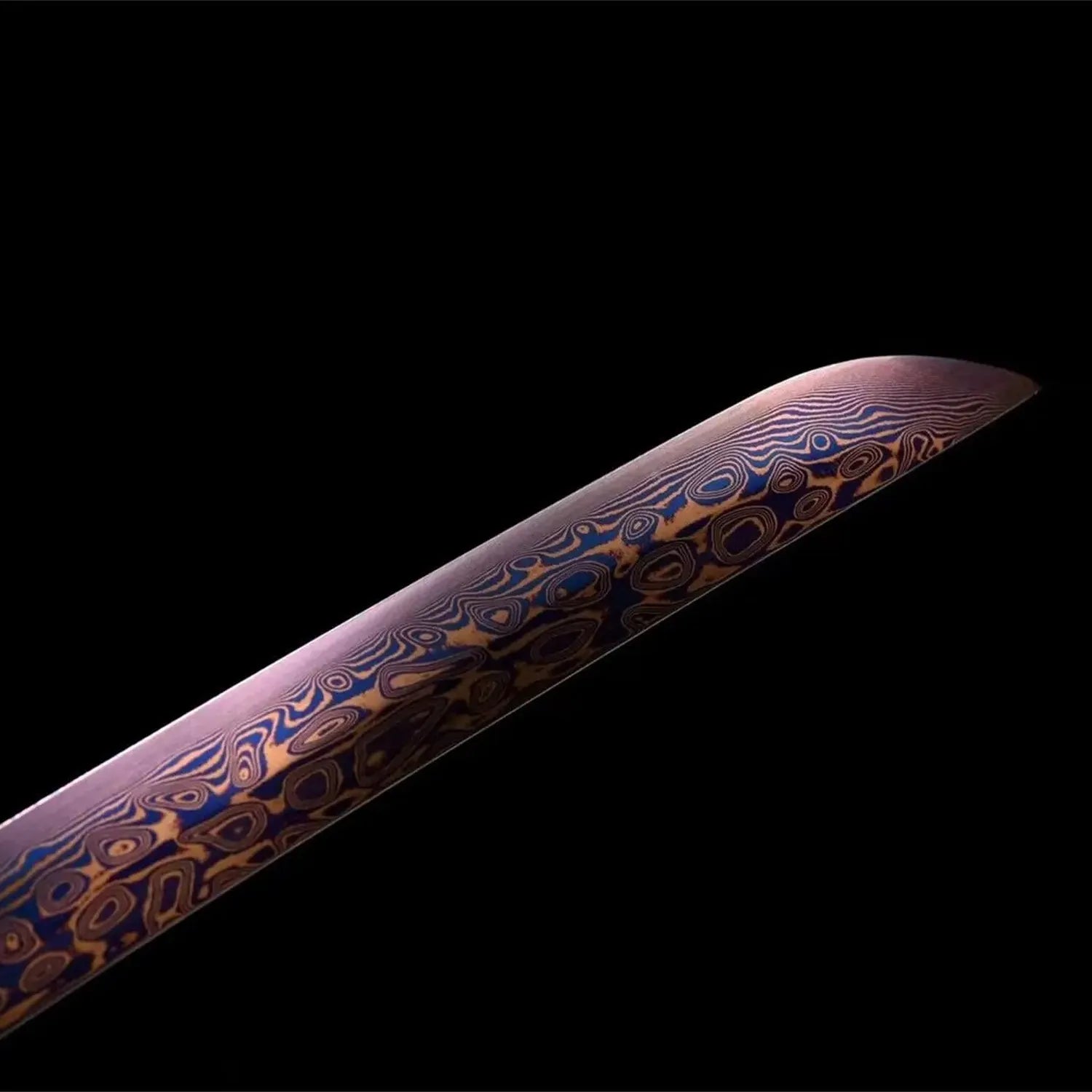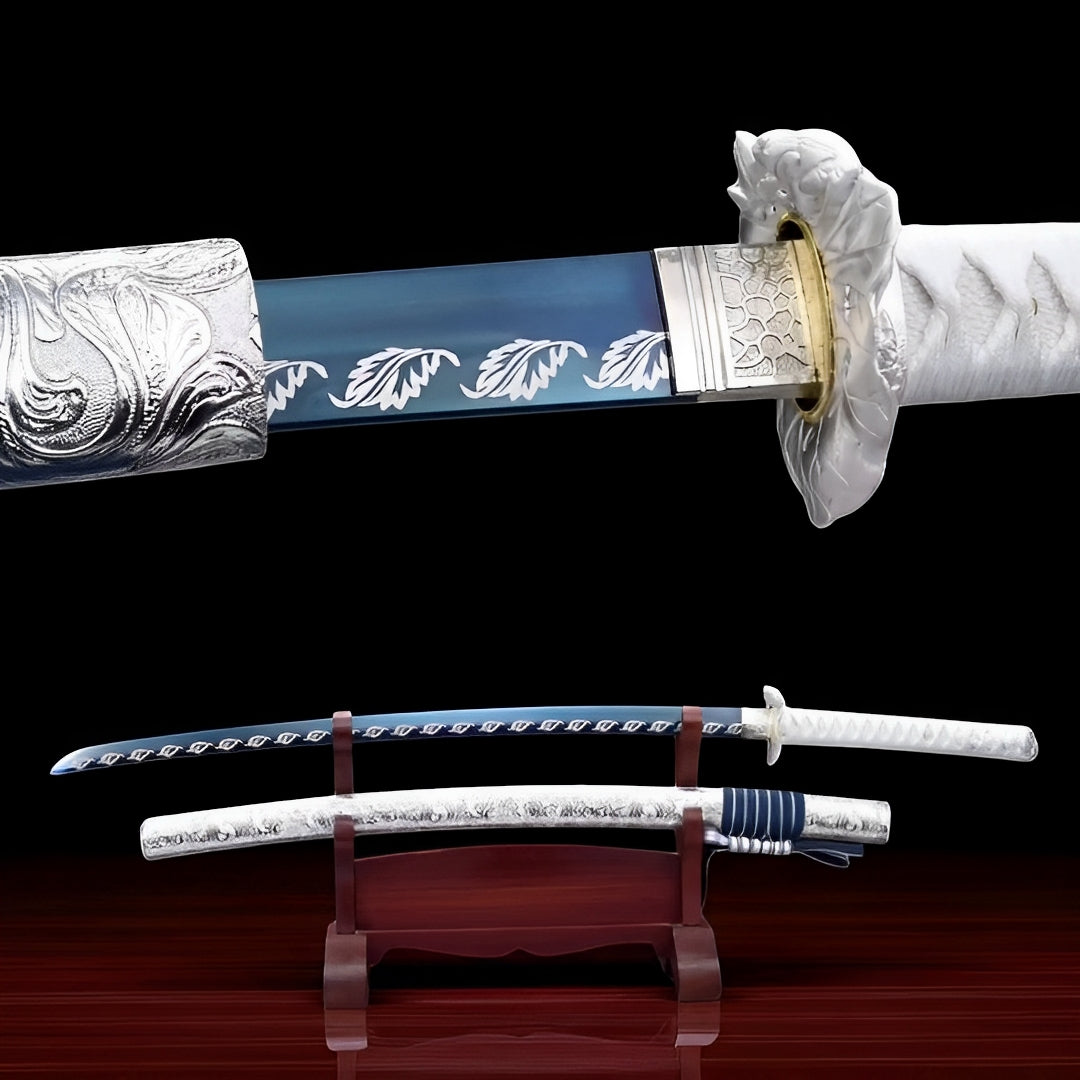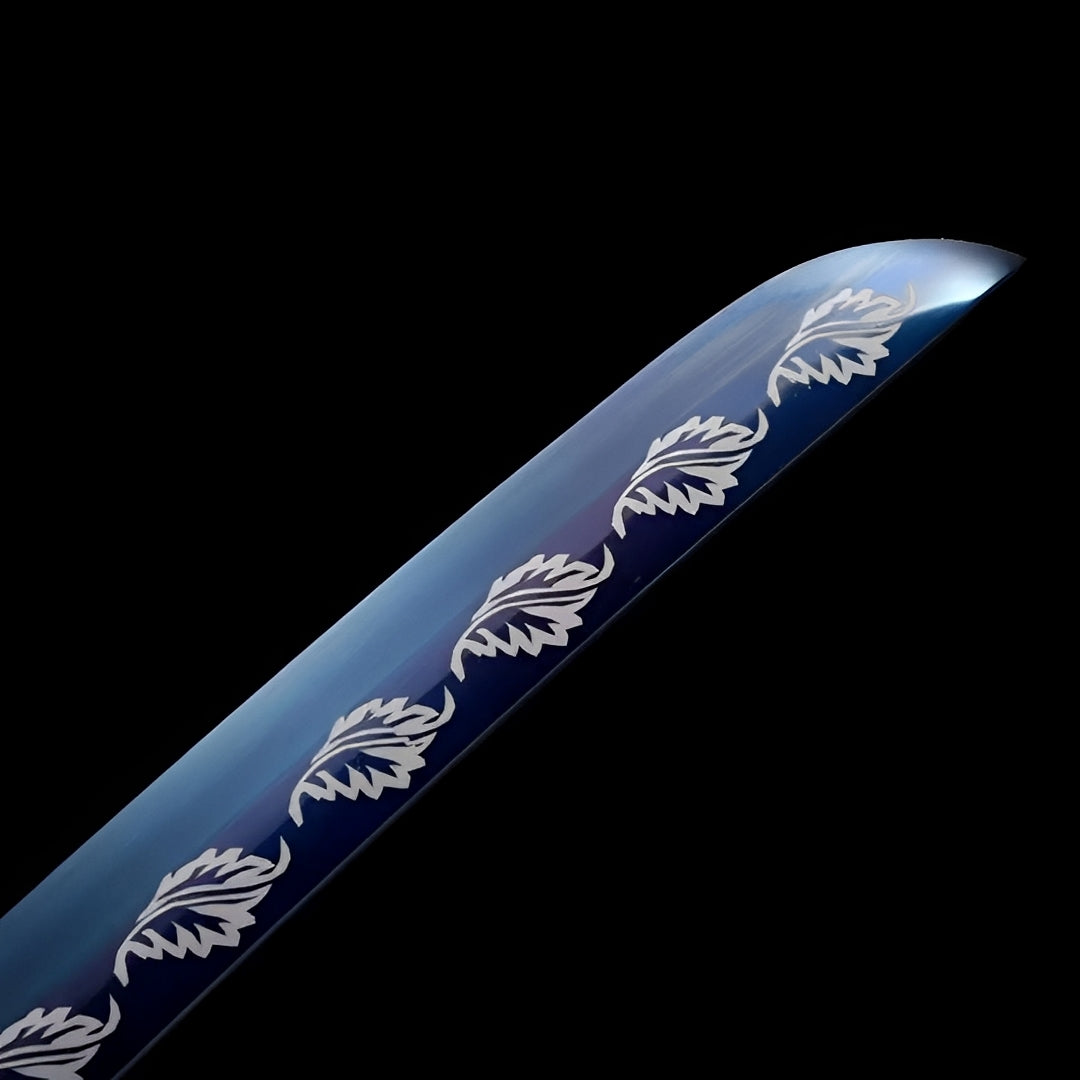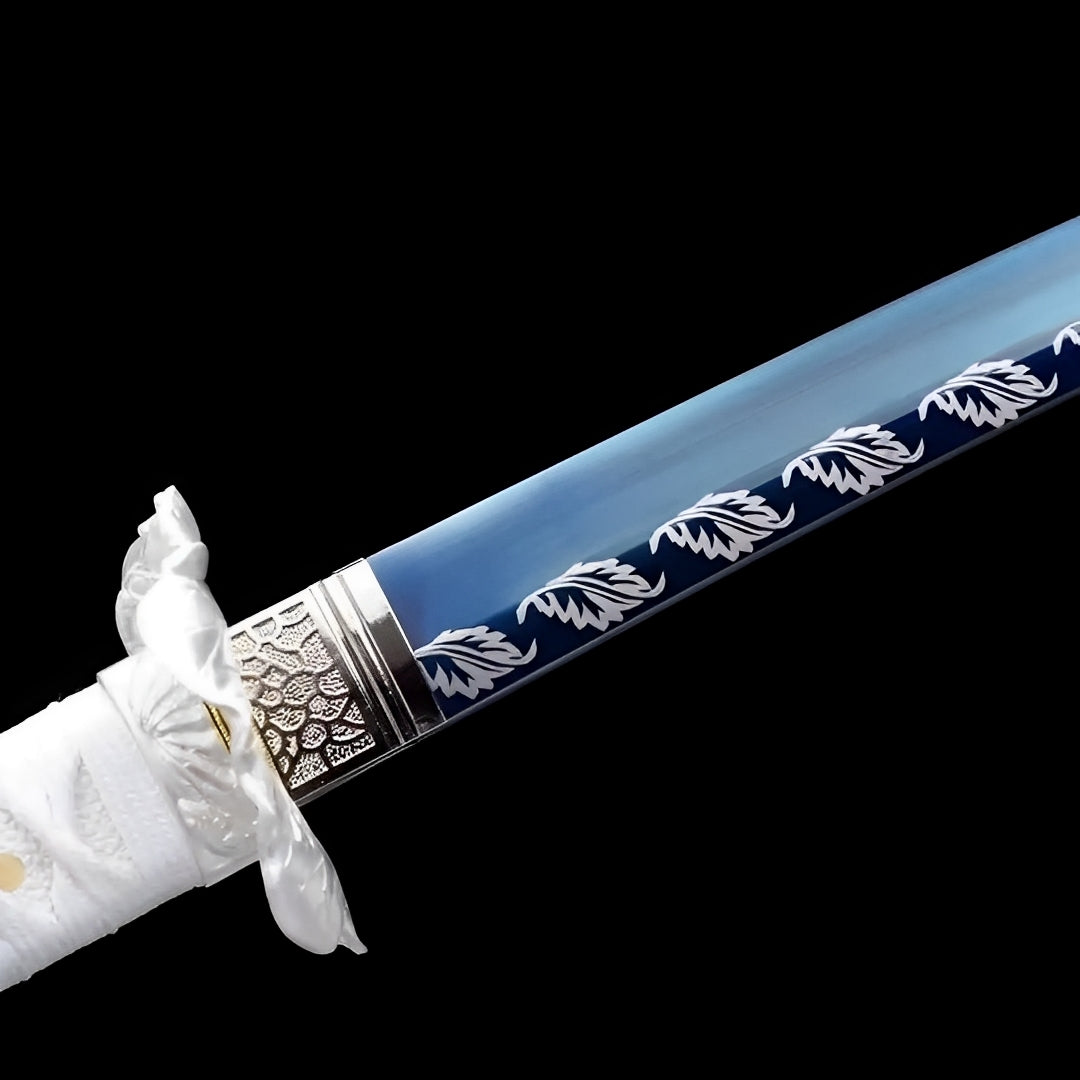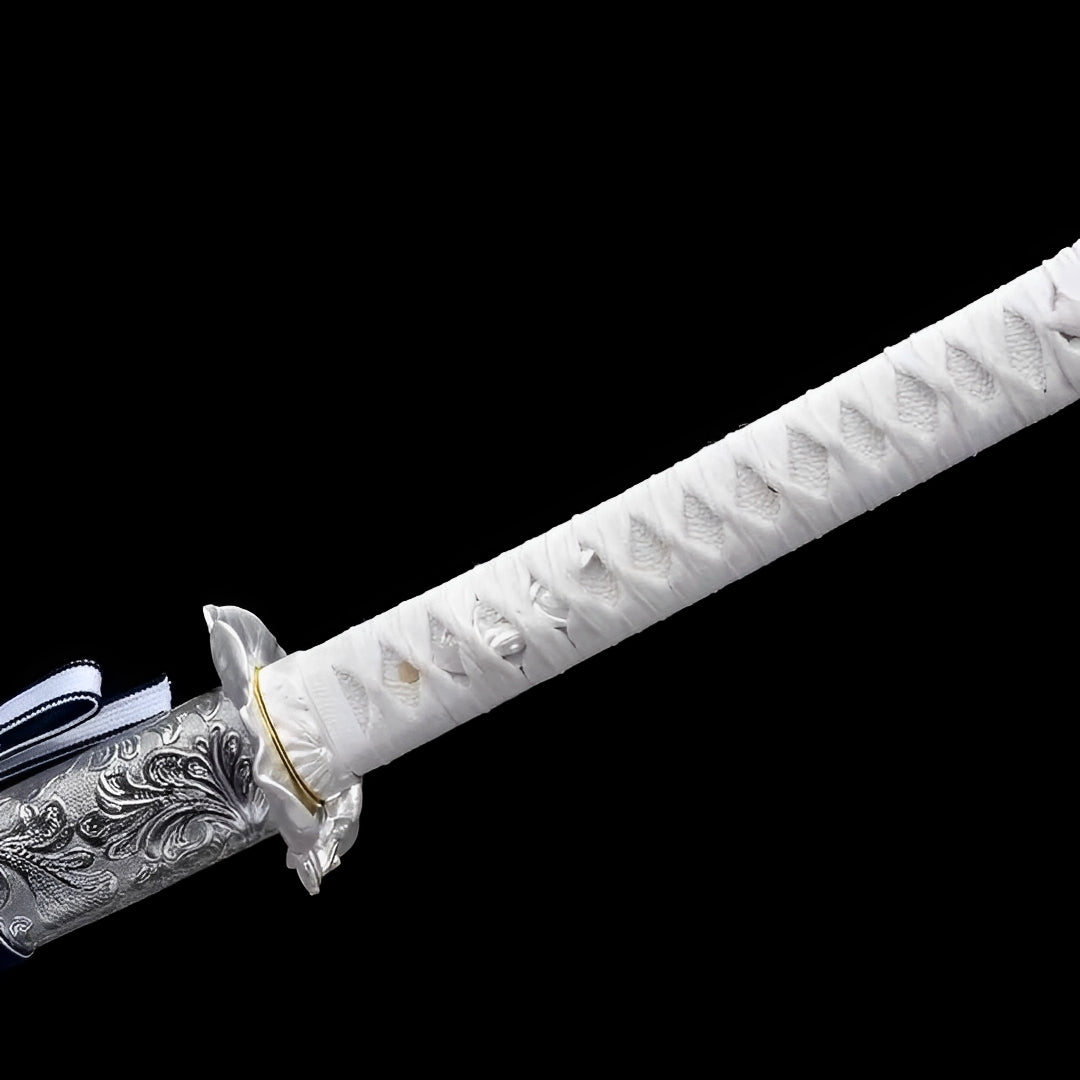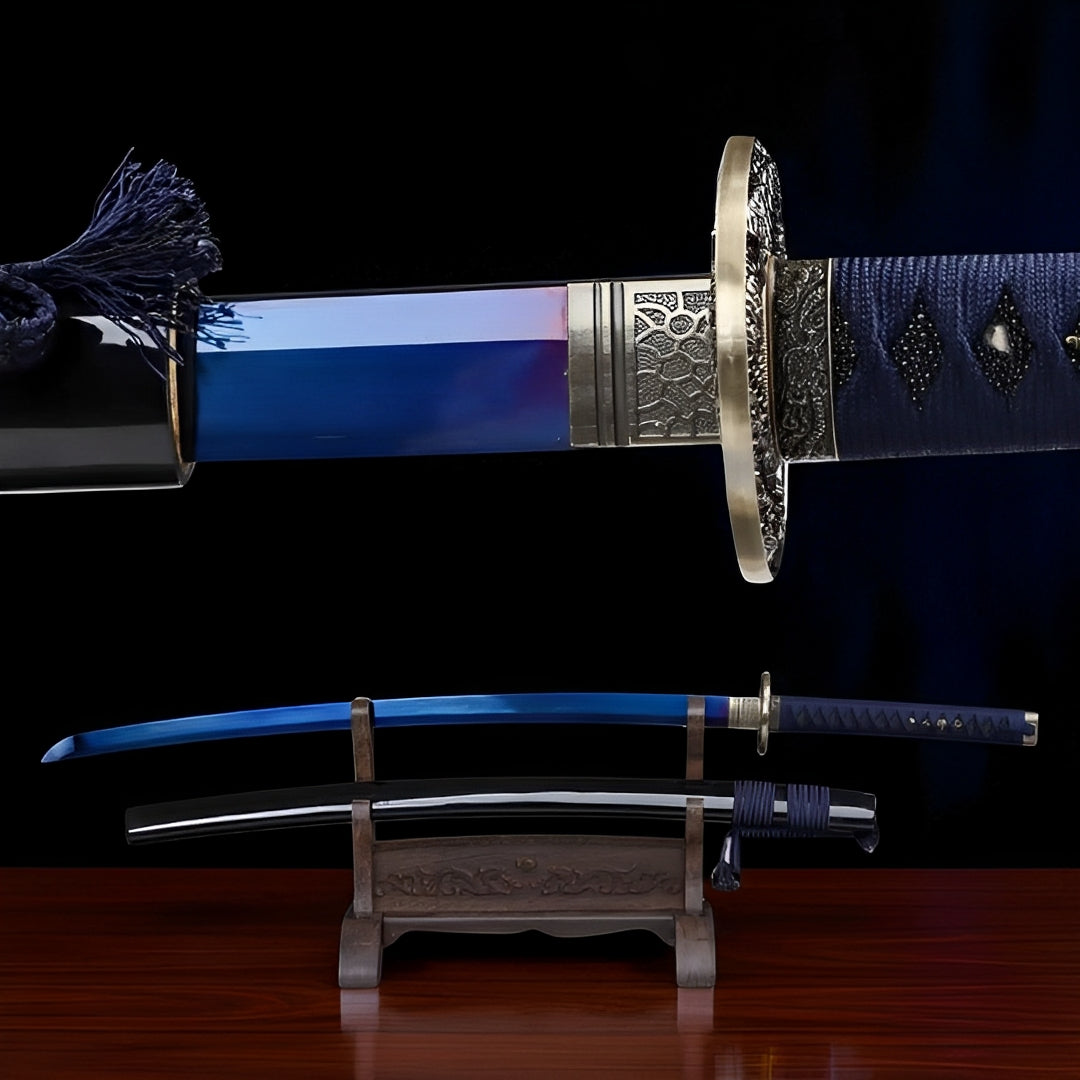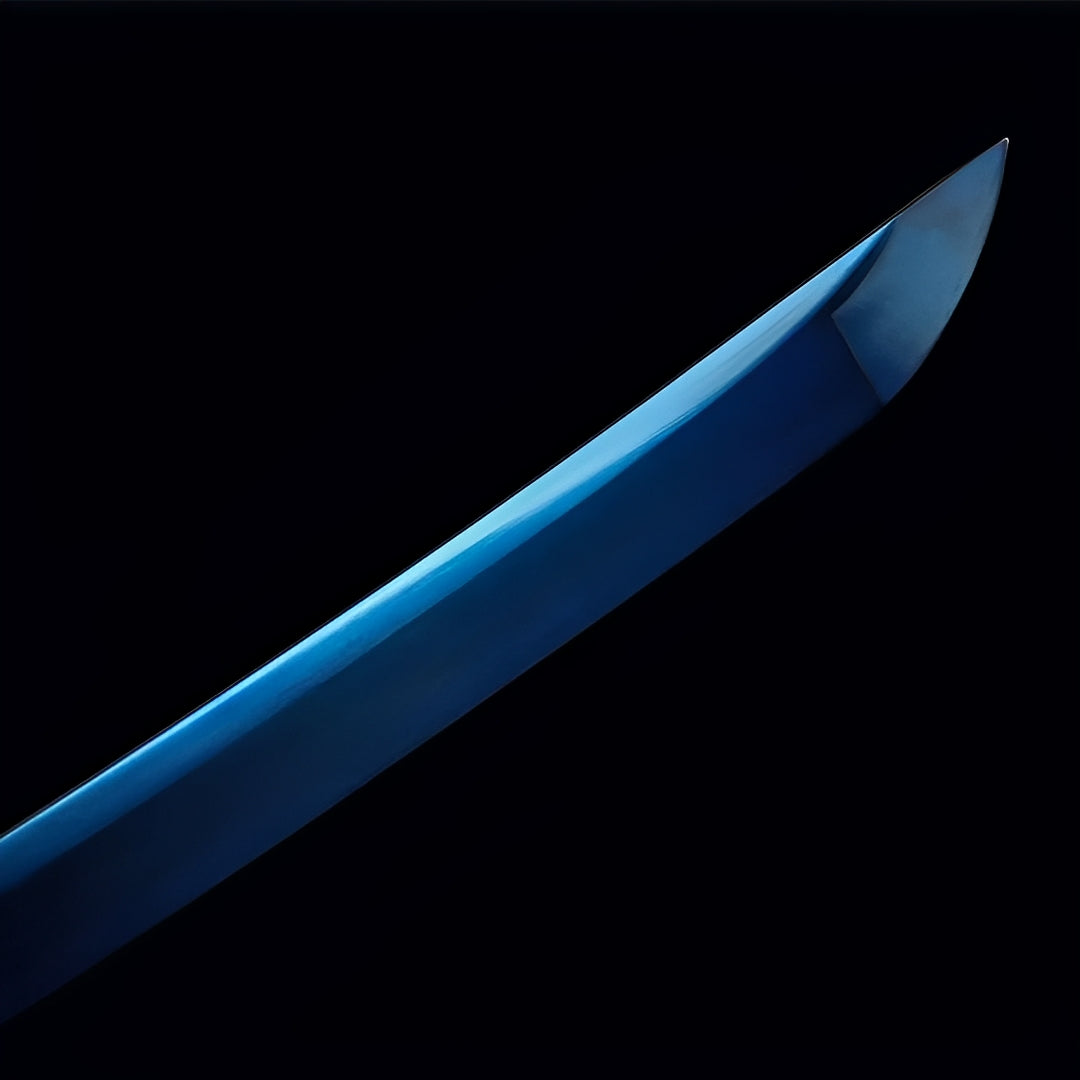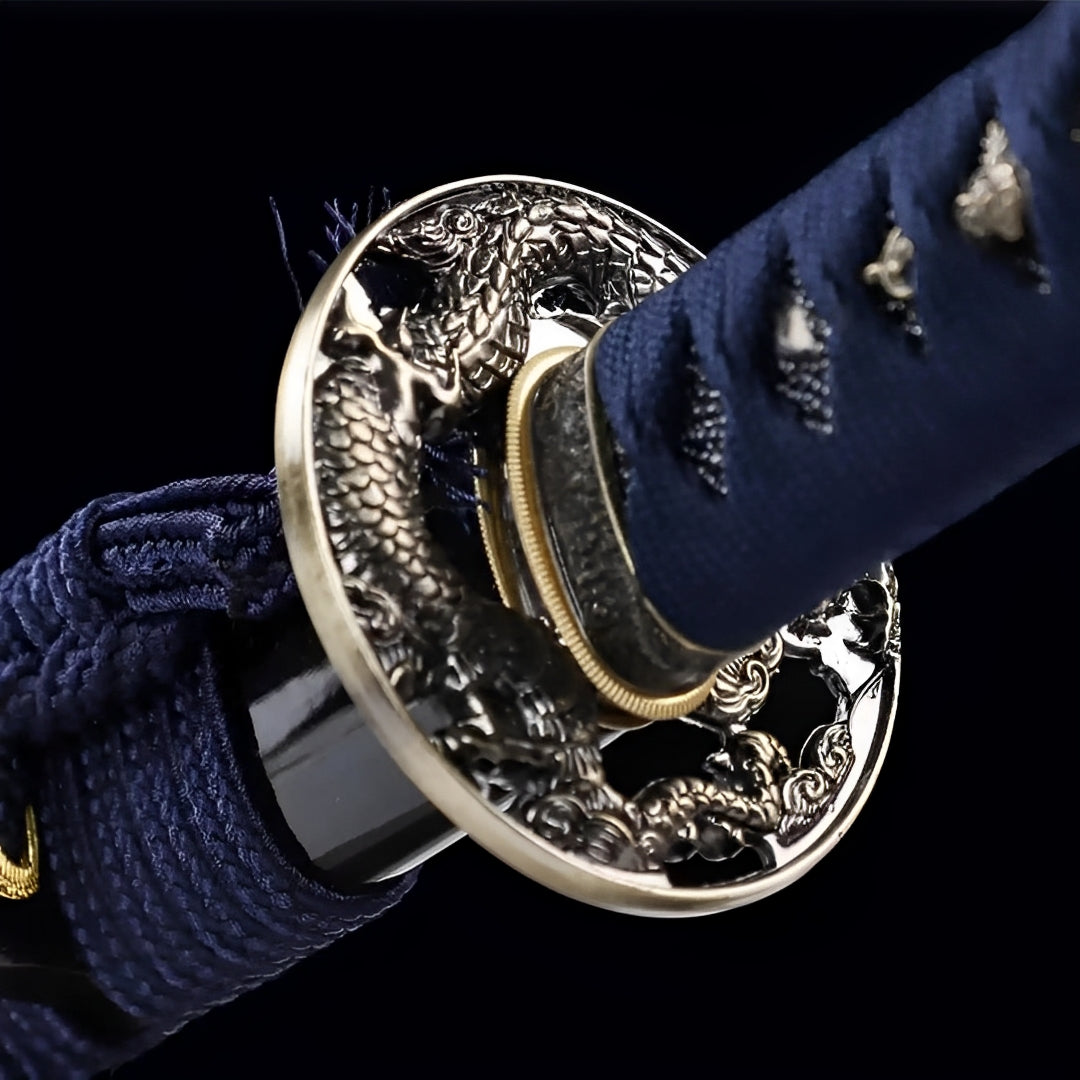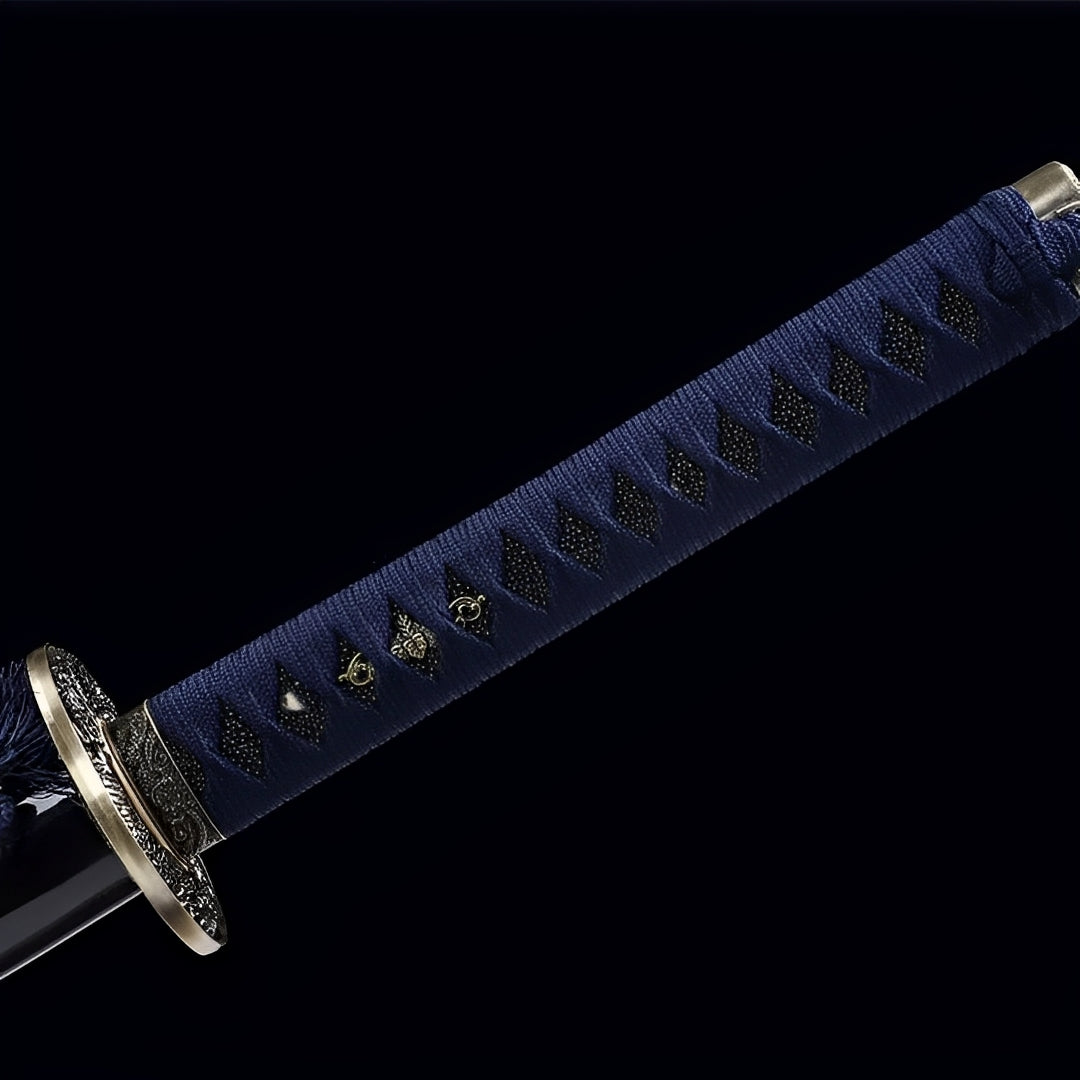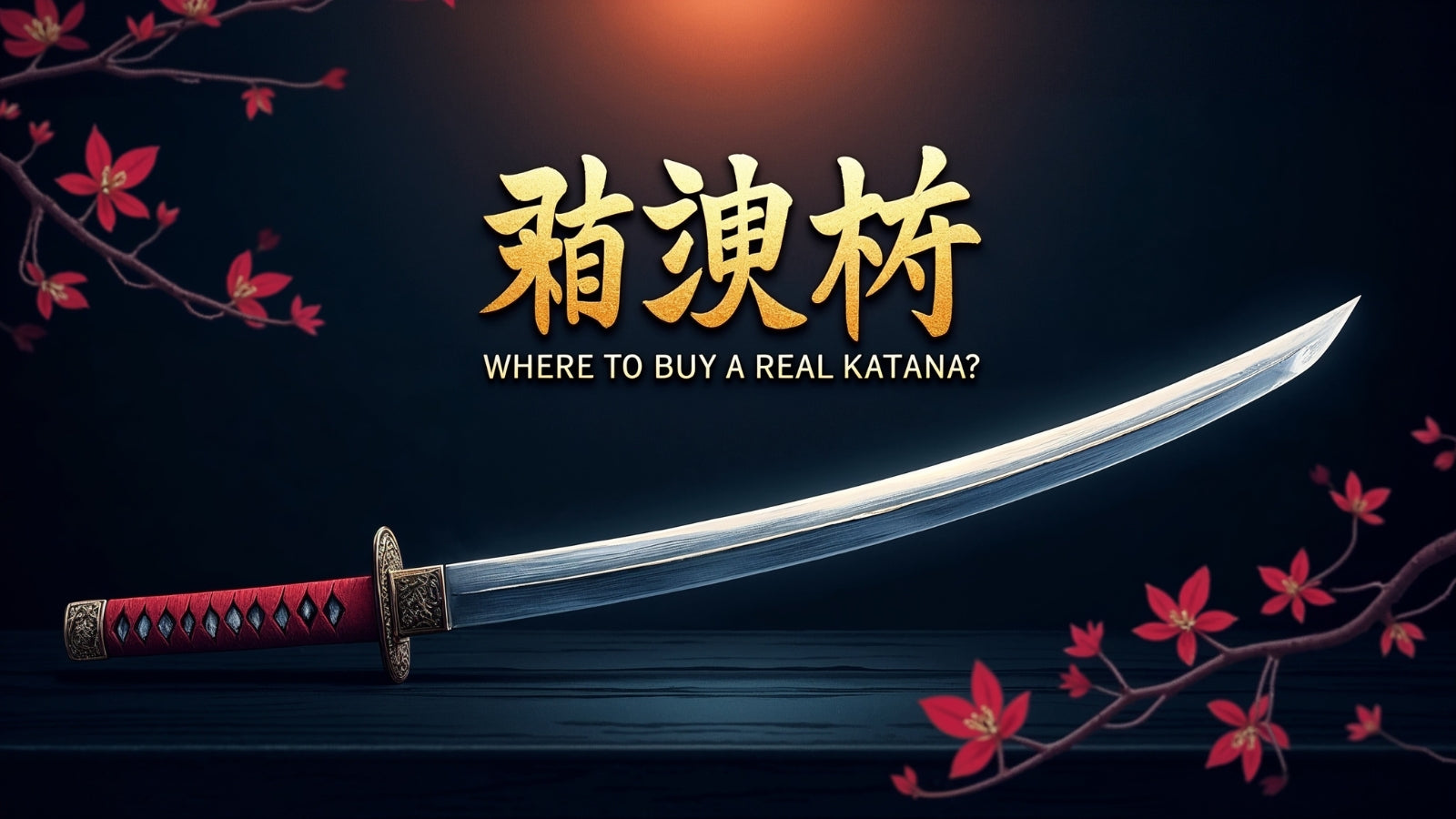Katana Sword by Katana Corp
Authentic handmade katanas crafted by skilled masters using traditional forging techniques
Ships within 48/72h
Forged Blade
Collector Quality
Trusted Globally
Inspired by Japan
Ships within 48/72h
Forged Blade
Collector Quality
Trusted Globally
Inspired by Japan
Ships within 48/72h
Forged Blade
Collector Quality
Trusted Globally
Inspired by Japan
Ships within 48/72h
Forged Blade
Collector Quality
Trusted Globally
Inspired by Japan
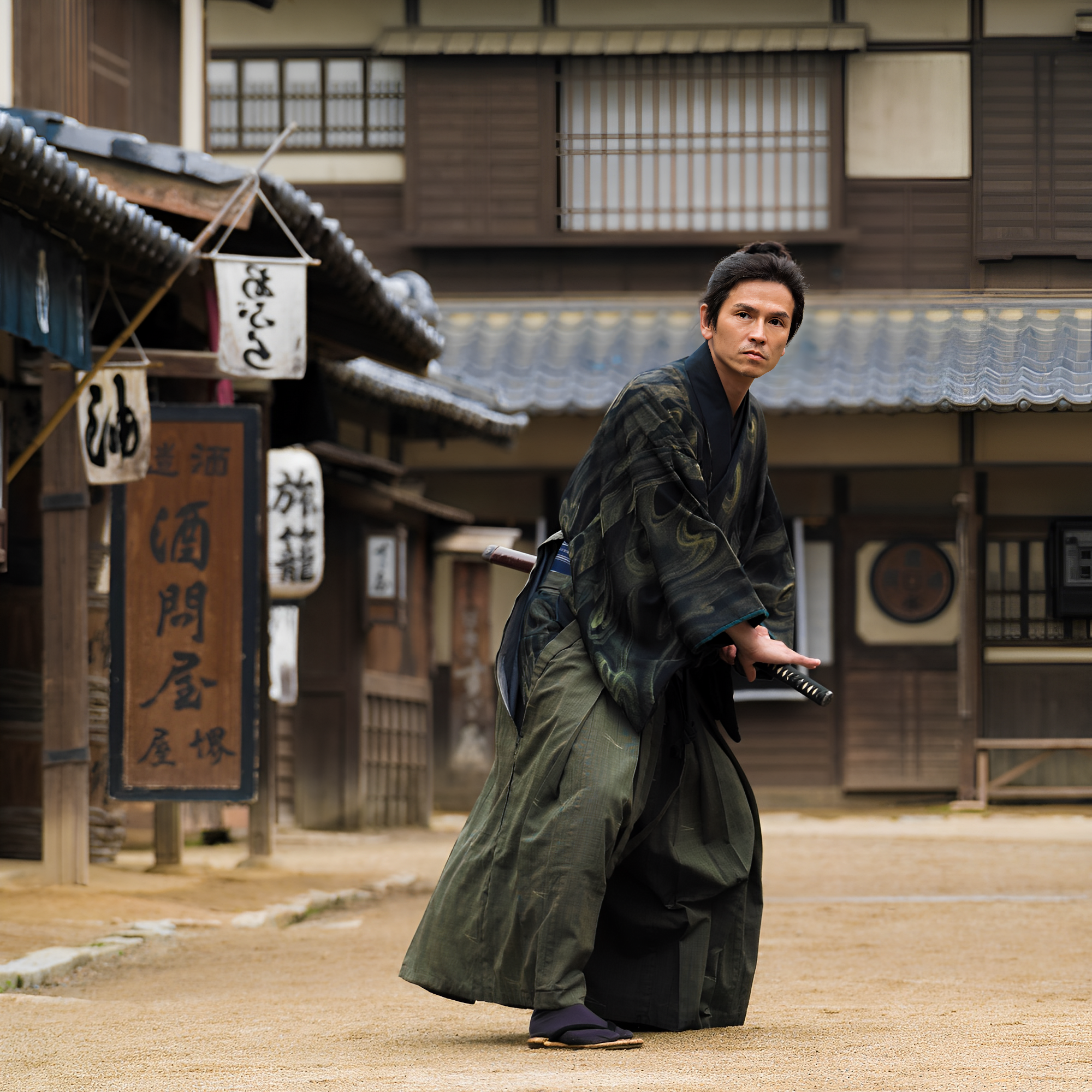
Experience the Real Katana of the Samurai
We only offer real Katanas, handcrafted by our master smiths using time-honored forging techniques. With decades of experience, we bring you authentic swords starting at just $200.
Our store features Damascus, carbon steel, and traditional Japanese steels, all designed with over 1,000 years of blacksmithing history.
Driven by our passion for Katanas and Japanese culture, we aim to share that heritage as genuinely as possible.
If you’re looking to buy a real Katana with authentic specs, clay-tempered Hamon, carbon steel blade, razor edge, and hand carving, you’re in the right place.

Looking for a Katana for Sale?
Explore our curated catalog of hand-forged Katanas, each crafted with care and shipped directly to your home. With hundreds of unique pieces available, you’re sure to find the Japanese sword of your dreams.
We offer a wide variety of steels, forging methods, styles, and sizes, including T10 steel, 1065 carbon steel, and 1045 manganese steel, with forging types such as Maru, San-Mai, Kobuse, and Honsan-Mai.
Need help choosing? Use our dedicated steel selection guide, or reach out to our experts by email, phone, or live chat, they’ll help you find the perfect fit.
Each Katana is fully disassemblable, so you can appreciate the fine details of every component: Tsuba, Habaki, Fuchi, Kashira, Sageo, and more.
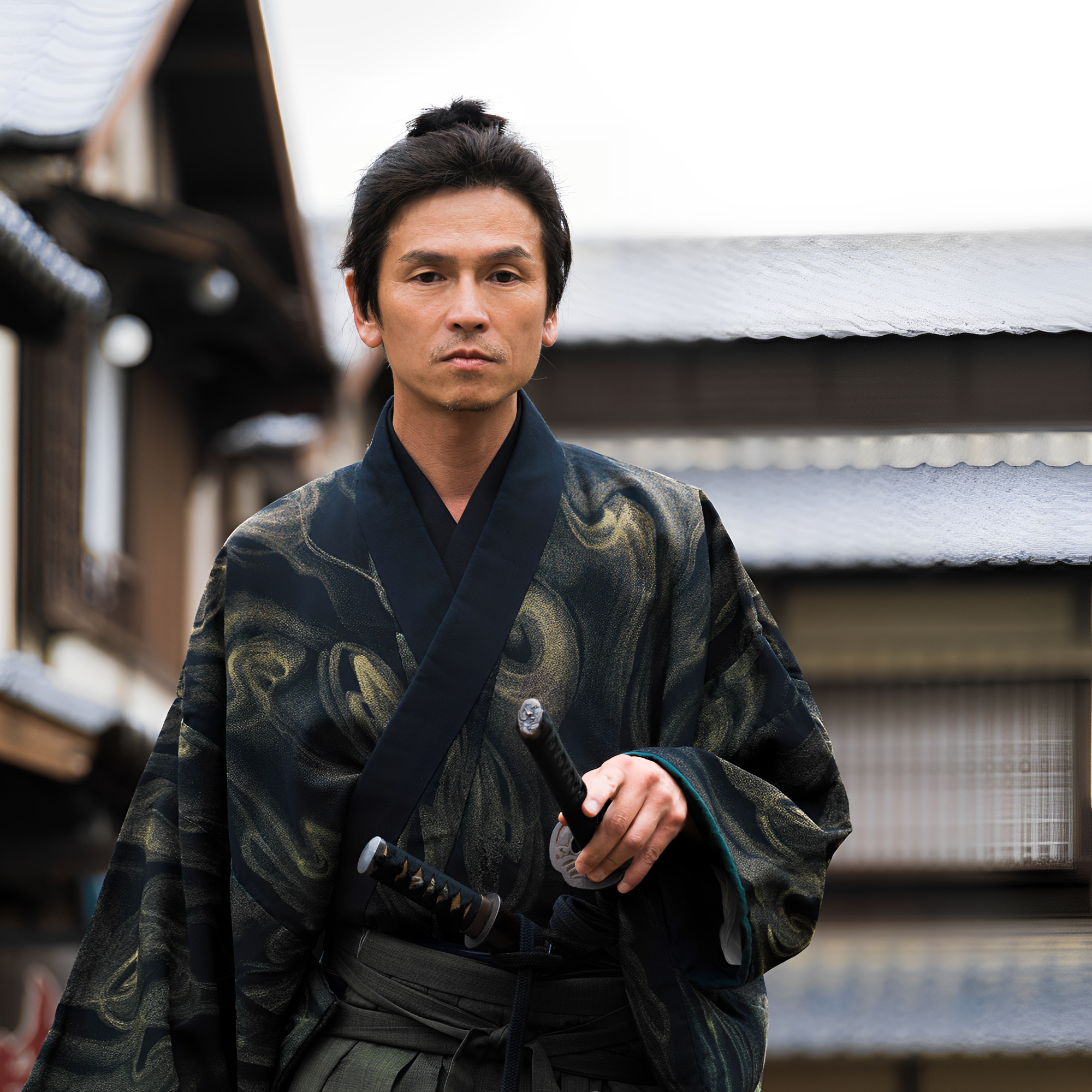
Create Your Custom Katana Today
Take your passion to the next level by designing a Custom Katana that truly reflects your style. From the blade to the scabbard, handle, and every intricate detail, you have full control over the entire nomenclature of your Japanese sword.
Select your preferred materials, colors, patterns, specifications, and even the forging method, whether traditional or modern.
Once your order is placed, our experienced craftsmen begin shaping your vision into reality. You’ll receive updates throughout the process and a tracking number once your Custom Katana is complete and on its way to you.
What is a Katana?
A katana (刀) is a traditional Japanese sword easily recognized by its curved, single-edged blade, circular guard (tsuba), and long handle crafted for two-handed use.
Measuring around 24 to 30 inches in blade length, it was the signature sword of the samurai, often paired with a shorter blade called a wakizashi, together forming the iconic daisho.
Beyond its combat role, the katana is a symbol of honor, precision, and centuries of craftsmanship, admired both as a martial arts tool and a collector's treasure.
Can you own a Katana in the US?
Yes, in most U.S. states, owning a katana is perfectly legal. Katanas are generally classified as edged swords, similar to large knives, and can be purchased and owned by adults over 18.
However, laws vary by state regarding how and where a katana can be carried. In most cases, carrying it in public requires a secure case and may be restricted. We always recommend checking your local laws before purchasing or transporting a sword.
Are the katanas functional?
Many of our katanas are handcrafted with full-tang construction and high-carbon steel.
These pieces are designed by expert craftsmen for collectors and enthusiasts seeking traditional samurai-style blades.
⚠️ Please note: some blades may be sharpened for authenticity, but our katanas are primarily intended for display, collection, or cosplay purposes.
Always check product details to ensure they meet your local legal requirements.
Do you Ship worldwide?
Yes, we offer worldwide shipping.
However, please note that import regulations for swords vary by country. We strongly recommend checking your local laws before placing an order, especially regarding bladed swords.
While we do our best to stay informed, we cannot guarantee delivery to countries where customs restrictions apply. If your country is not listed at checkout, feel free to contact us directly for assistance.
Are the Katana full Tang?
Yes, all of our functional katanas are full tang. This means the blade extends fully into the handle, providing maximum strength, balance, and durability.
Each sword is hand-forged following traditional techniques to ensure not only superior performance during cutting practice, but also to honor authentic Japanese craftsmanship.
A full-tang construction is essential for any katana designed for real use.
How much does a real Katana cost?
The price of a real katana can vary greatly depending on the materials, craftsmanship, and origin. A traditionally made katana from Japan, forged with Tamahagane steel by a certified swordsmith, can range from $3,000 to over $10,000.
However, high-quality hand-forged katanas made outside Japan using modern steels are also available for a few hundred dollars. In our store, we offer authentic, real katanas starting around $200, each crafted with care, using real forging techniques and high-performance materials.
What about the delivery?
We offer free shipping on all U.S. orders over $250. For international orders, a flat shipping rate of $19 applies. If you’d like to add a premium gift box and silk bag, an optional $30 upgrade is available.
Delivery times vary depending on the craftsmanship involved, but most orders are delivered within 7 to 21 business days. Each katana is carefully inspected and packaged to ensure it arrives in perfect condition.
Learn more about the Katana
Do Samurai Still Exist in Japan?
The image of the samurai has long fascinated the world. From noble warriors on horseback to masters of the katana, samurai symbolize a unique blend of martial prowess, discipline, and moral integrity.
Wakizashi vs Katana: Two Blades, One Samurai Soul
What truly separates a katana from a wakizashi? Discover their origins, symbolism, key differences, and which one is best for you.
Where to Buy a Real Katana?
Looking to buy a real katana, not just a decorative replica? Discover where to find authentic samurai swords, how to spot fakes, and the best places to buy, online and offline.
Should Katana Have Hamon?
Yes, a true traditionally-forged katana features a hamon, the visible temper line created during differential heat treatment. This process involves applying clay to the blade before quenching, allowing the edge to harden while keeping the spine more flexible.
The hamon is both functional and aesthetic: it enhances cutting performance and reflects authentic Japanese sword-making techniques. During polishing, the hamon becomes more visible, showcasing the craftsmanship behind the blade.
While some decorative swords feature artificial hamons, a real hamon is always the result of proper forging and heat treatment.
How long is a Katana?
A standard katana typically measures around 40 inches (about 100 cm) in total length, with the blade itself ranging from 24 to 30 inches (60 to 76 cm). However, variations exist depending on the style of the sword and the height of the practitioner.
For example, longer blades are often preferred by taller users for better balance and reach. Traditional sword classifications also include the shōtō (short sword, ~35") and daitō (long sword, ~40"). The right length depends on your body type and intended use.
How to sharpen a Katana?
Sharpening a katana is a highly skilled and delicate process rooted in traditional Japanese craftsmanship. It involves a series of polishing stages using natural whetstones of increasing fineness.
A trained polisher starts by refining the blade’s shape and edge using coarse stones, then gradually smooths the surface with finer stones like uchigumori, hazuya, and jizuya.
Each step removes scratches from the previous one, ultimately revealing the blade’s sharpness and hamon. Because improper sharpening can permanently damage the sword, we strongly recommend leaving this work to experienced professionals.
Why were Katanas made?
Katanas were developed in feudal Japan to meet the evolving needs of samurai warriors in battle. Unlike earlier straight-bladed swords, the katana’s curved design allowed for faster, more efficient cutting, especially from horseback.
Historians often link its refinement to Japan’s military response during the Mongol invasions of the 13th century, when traditional swords proved ineffective. The katana became the ideal balance of speed, precision, and strength, and over time, a symbol of the samurai’s honor and discipline.
Where to buy a Katana?
You can purchase a katana directly from our website, where we offer a wide selection of hand-forged swords crafted in various styles, steels, and finishes, from decorative pieces to fully antiques blades.
Our katanas start at around $200, making authentic craftsmanship accessible without compromising on quality.
Whether you're a collector, martial artist, or first-time buyer, our team is here to guide you. We’ve also created detailed buying guides to help you make the right choice with confidence.
➜ Learn more about Katana
Everything You Should Know About Katana Sword Parts
Welcome to Katana Corp. Here's everything you need to know about the parts that make up a traditional Japanese Katana.
The katana is more than a sword—it's a precise work of art, shaped by centuries of craftsmanship. Below is a breakdown of each component.
Sori: The sori measures the curvature of the blade. This curve varies depending on the sword and affects both style and cutting technique.
Shinogi & Shinogi-Ji: The shinogi is the ridgeline running along the blade. The flat surface between the shinogi and the spine is called shinogi-ji. Together, they define the katana’s structure and strength.
Hamon: The hamon is the temper line created during differential hardening. It's the visible border between the hardened cutting edge and the softer body. Made using a clay mixture, this line is both functional and aesthetic, and its clarity can affect the blade’s value.
Boshi: This is the continuation of the hamon into the blade’s tip, the kissaki. Proper polishing of the boshi is crucial and requires great skill.
Yokote: The yokote is the line separating the main blade from the tip. While most katanas have it, some have a continuous blade without a yokote.
Kissaki: The kissaki is the blade's tip. Its size and shape vary, and it's defined by its separation from the rest of the blade via the yokote.
Ha: The ha is the cutting edge of the blade. It’s traditionally hardened and sharpened to ensure durability and sharpness over time.
Bo-Hi: The bo-hi is a groove carved along the blade to reduce weight and adjust the balance. It also creates a distinct sound when swinging—useful for assessing the precision of cuts.
Nakago: The nakago is the tang, the portion of the blade that extends into the handle. It often carries the smith's signature and is essential to the sword’s strength, even though it's hidden.
Saya: The saya is the scabbard, usually made of lacquered wood. It’s designed for quick drawing while keeping the blade secure when sheathed.
Shitadome & Kurigata: These components anchor the sageo cord to the saya. They add both functionality and decorative value to the scabbard.
Sageo: The sageo is the cord used to tie the katana to the wearer’s belt. It comes in different materials and colors, often matching the handle's design.
Habaki & Seppa: The habaki is a metal collar that helps seat the blade securely into the saya and dampens vibrations. The seppa are spacers that help stabilize the tsuba and other fittings.
Tsuba: The tsuba is the guard between the blade and handle. It protects the wielder’s hand and balances the blade, often decorated as a piece of art.
Fuchi: The fuchi is a metal collar at the base of the handle, adding strength and covering the junction between blade and grip. It's usually engraved with traditional motifs.
Tsuka-Ito: This is the wrapping cord around the handle. Made from leather, cotton, or silk, it ensures grip and aesthetics, and is wrapped in specific patterns.
Same: Same is the ray skin or shark skin beneath the tsuka-ito. It provides texture and grip, while also absorbing shock.
Mekugi: Mekugi are bamboo pegs driven through the handle to secure the tang. Although just two small pieces, they are key to keeping the blade fixed in place.
Menuki: These are small ornamental pieces placed under the tsuka-ito. They add both decoration and grip enhancement.
Kashira: The kashira is the pommel cap at the end of the handle. It secures the wrapping and adds balance and visual symmetry with the fuchi.
Each of these parts contributes to the katana's performance, balance, and identity. Knowing them deepens your appreciation for one of Japan’s most iconic swords.



